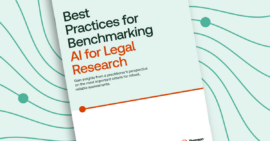There have been several advocates, particularly post-pandemic, for a cashless Australian society (if not world). Motivations for a cashless society are not limited to the control of financial crime of course, although it may be principal among them. From a financial crime control perspective, the logic behind a cashless society is supposedly that because cash has been and is used extensively in the commission of financial crimes (notably dealing in the proceeds of crime offences (money laundering)), cessation of physical currency exchanges would abrogate this risk.
This article reviews the possibility of a cashless society and its effect on financial crime and suggests that although physical currency is obviously used in money laundering (especially in its more unsophisticated emanations), it is naïve in the extreme to expect that a business, industry or country ceasing to use physical currency will do anything other than displace any financial crime away from that particular methodology. It then goes on to argue that the only real beneficiaries of a cashless society are the financial institutions and suggests that a more appropriate approach to deal with financial crime is to resource better the various agencies involved in the investigation and prosecution of financial crime.
Financial Crime Control and Displacement
Preventing one possible financial crime typology is not the same thing as preventing financial crime more generally; does preventing financial crime via the use of physical currency mean that criminals will consequently not engage in tax evasion or money laundering? It is suggested not. If it is assumed that cessation of transactions using physical currency stops financial crime involving physical currency, what do criminals do then? This is precisely the question with which the criminological Displacement theory is concerned.
The Displacement theory argues that removing the opportunity for crime or seeking to prevent a crime by changing the situation in which it occurs does not actually prevent crime but merely moves it around. Whether displacement occurs is said to be largely determined by three factors: offender motivation, offender familiarity and crime opportunity. Offender motivation determines which offenders and types of crimes are likely to be displaced. Assuming that offender motivation remains unchanged by such action, it is plausible that, in being denied one opportunity, a motivated offender will simply target another. Alternative opportunities might be found in other geographical locations (spatial displacement), at other times (temporal displacement) or for other targets (target displacement). They may be made possible through the use of methods or tools not previously employed (tactical displacement), or an offender may focus on a different outcome, such as committing theft against the person rather than a burglary (crime type displacement). These five types of displacement were first defined by Hesseling (Hesseling R, “Displacement: A Review of the Empirical Literature” in Clarke RV (ed), Crime Prevention Studies (Monsey: Criminal Justice Press, 1994) vol 3). Later, a sixth typology was coined by Barr and Pease, namely that those offenders who are not arrested may easily exploit the opportunities that their incarcerated counterparts would otherwise have taken advantage of (Barr R & Pease K, “Crime Placement, Displacement and Deflection” in Tonry M and Morris N (eds), Crime and Justice: A Review of Research (Chicago: University of Chicago Press 1990) vol 12).
Noting the almost infinite number of ways (if not infinite by virtue of new technology as and when it develops) financial crimes may be committed, it is difficult to understand how cessation of cash transactions will do anything other than potentially prevent some unsophisticated financial crimes but otherwise, simply displace sophisticated financial crime to other methods. The writer has already observed a rise in fraud and cybercrime since responses to COVID-19 (See Leighton-Daly M, Controlling the Rise of Financial Crime During the Pandemic: What has Changed?). Since then, AUSTRAC have released their own guidance too in relation to the Optus data breach.
Cashless doesn’t mean free
From the point of view of the consumer, cash – except insofar as financial institutions charge them to access it – is a free currency to buy and sell goods and services. This is not true in relation to cashless transactions. According to the Reserve Bank of Australia, the data show that the cost of accepting a card payment is dependent on the type of card used by the customer and the scheme through which the transaction is processed but not free. Payments made through the domestic debit scheme, eftpos, are generally the least expensive, costing merchants an average of 0.3 per cent of the transaction value (December 2019 quarter). This compares with an average merchant fee of 0.5 per cent for Visa and Mastercard debit card transactions, and 0.9 per cent for Visa and Mastercard credit card transactions. The three-party card schemes, American Express and Diners Club, are the most expensive, with average merchant fees of around 1.4 per cent and 1.8 per cent of the transaction value, respectively.
Assuming that that the Displacement theory is relevant to financial crime, it is financial institutions who will stand to gain the most from a cashless environment rather than relevant agencies and the community more broadly. Of course, there may other valid motivations at least for cashless transactions if not a cashless society – including a general increase in declared assessable income for direct and indirect taxation purposes for example – however the idea that it is a financial crime panacea is unrealistic.
Resourcing the regulators
Interrogation of data generated by cashless transactions can already be overwhelming for financial institutions and regulators alike. Anecdotally, the writer is aware of criminals ensuring the lodgement of suspicious matter reports (SMRs) to AUSTRAC to either try to legitimise transactions or at least overwhelm the regulator. No doubt financial transactions records and SMRs are an essential component in the detection, investigation and prosecution of financial crime. At least as important, it is argued, is the proper resourcing of the relevant agencies noting that there are many ways detection and investigation processes can be utilised even in relation to physical currency transactions to detect and investigate financial crime.
Although there may be valid motivations, at least for some cashless transactions, it is naïve to expect that a business, industry or country in ceasing to use physical currency will do anything other than displace financial crime away from that particular typology. Financial institutions on the other hand would benefit as the cashless facilitators. Rather than to behave in a way that may simply displace crime and force criminals to exploit new technologies further to avoid detection, a more appropriate approach it is suggested is to simply resource better the various agencies involved in financial crime detection, investigation and prosecutions.
![]()


